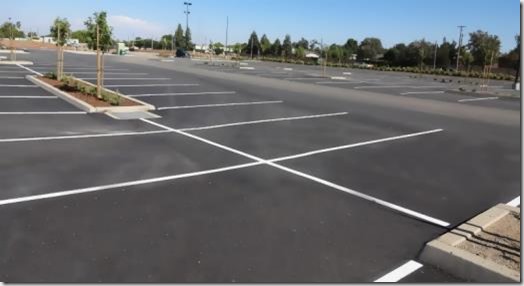I was surprised to see on a forum that the fact that young people have more accidents was being disputed. Insurance companies don’t charge young people more just for fun – it’s based on factual data.
Some of the comments were opinion-based, and made no attempt to link to actual statistics. But the statistics are there for anyone who cares to look (unfortunately, too many people favour the “lies, damned lies, and statistics” mantra over facts, and appear to see no wrong in today’s young people).
This report from 2010, based on investigations by Admiral, reveals that 17 and 18 year olds are:
- twice as likely to have an accident as someone in their 30s
- three times as likely than someone in their 40s
- six times as likely as someone over 50
The data cover 2 million motorists, so they’re hardly non-representative. Admiral also found that:
- 13% of 17 and 18-year olds have had crashes
- 6.5% of motorists overall have had crashes
- 4.5% of those in their 40s have had crashes
- 2% of over 50s have had crashes
The cost of the claim was also revealing. The average claim value was:
- £3,500 for 17 and 18-year olds
- £1,741 for drivers overall
- Accident claims by 17 and 18-year olds are five times more likely to include an injury to someone
A spokeswoman for Admiral said that the young driver statistics only seem to improve when they reach 25. The report also notes that those in the 17-21 age group are four times more likely than the average driver to be involved in a careless driving rap.
This report by Roadsafe (2009) also makes interesting reading. In particular the table on page 5, which compares factors involved in KSIs against age. It shows that 17-24 year olds are, when compared to over 25s:
- more than twice as likely to lose control
- twice as likely to be careless, reckless, or in a hurry
- twice as likely to be caught out by road conditions
- ten times as likely to be inexperienced, resulting in an accident
- over twice as likely to be travelling too fast for the conditions
- three times as likely to be exceeding the speed limit
This was comparing nearly 40,000 young driver KSIs with 150,000 older driver KSIs.
Brake, the road safety charity, reports that:
There is a wealth of research and casualty data showing that young drivers – particularly young male drivers – are at a much higher risk of crashing than older drivers. They are therefore more at risk of losing their lives or being seriously injured on the road, often killing or injuring their young passengers or other road users too. For example, in the UK only one in eight driver licence holders is aged 25 or under, yet one in three drivers who die is under 25.
That is quite a sobering thought. That only 12.5% of the driving population accounts for 33% of all road deaths. The report also notes:
- 17-20 year old males are seven times more at risk than all male drivers
- between 2am and 5am they are seventeen times more at risk
Those wishy-washy liberals who can find no wrong in today’s youth need a good slap to wake them up. There is clearly a problem.
The Safe Roads Partnership says much the same thing, and also includes numerous report references for those ready to dispute the facts. Interestingly, they also point to Pass Plus as being a way of improving matters – which flies in the face of recent comments by ADIs that Pass Plus is a waste of time (it’s only a waste of time if the person delivering it is a crap instructor).
From my own perspective, I teach people to drive. How they choose to behave when they leave me is unfortunately out of my control, and no one is ever going to convince me otherwise. Part of the reason many of them DO behave so differently on their own is that they’ve been brought up badly by people who simply can’t see that there are problems, and so who don’t do anything about it. I mean parents and school teachers.
I say again: I teach them how to drive. I give them all the necessary skills to do what I did when I learnt to drive – and that is to take care and carry on learning. That’s what the driving test does. It allows people who have reached the first point on a lifelong learning curve to go out and move to the next level.
Unfortunately, modern youngsters have been brought up to believe differently. And that’s why we have such shocking statistics.
One more thing. It doesn’t matter if the number of deaths involving 17-24 year olds has fallen over the last 10 years. What matters is the proportion of deaths compared to other age groups – because that highlights the problem instead of trying to sweep it under the carpet.
 As we passed through the lights at Road No. 1 I noticed a car in my rearview mirror (a metallic powder-blue Vauxhall Astra, reg. no. FN09 HFD) approaching at speed. It didn’t actually slow down, even though the two lanes were merging into one, so I put my fingers on the steering wheel to make sure my learner didn’t panic and steer into the kerb or brake hard (as learners often do when they see someone cutting them up).
As we passed through the lights at Road No. 1 I noticed a car in my rearview mirror (a metallic powder-blue Vauxhall Astra, reg. no. FN09 HFD) approaching at speed. It didn’t actually slow down, even though the two lanes were merging into one, so I put my fingers on the steering wheel to make sure my learner didn’t panic and steer into the kerb or brake hard (as learners often do when they see someone cutting them up). When you travel the roads every day, you see dozens of people out there who – one way or another – are not good drivers. You get boy racers who think they’re good, but aren’t. You have older drivers whose faculties are declining. You get the white-knuckle matrons who are terrified of being on the roads at all, but go on them anyway. You get the diminutive 4×4 drivers who couldn’t handle a Tonka truck, let alone a 2½ tonne tank (especially near schools and in supermarket car parks). You get people who simply can’t do roundabouts, and who negotiate the same ones every day and do them wrong every time. The list goes on and on.
When you travel the roads every day, you see dozens of people out there who – one way or another – are not good drivers. You get boy racers who think they’re good, but aren’t. You have older drivers whose faculties are declining. You get the white-knuckle matrons who are terrified of being on the roads at all, but go on them anyway. You get the diminutive 4×4 drivers who couldn’t handle a Tonka truck, let alone a 2½ tonne tank (especially near schools and in supermarket car parks). You get people who simply can’t do roundabouts, and who negotiate the same ones every day and do them wrong every time. The list goes on and on.